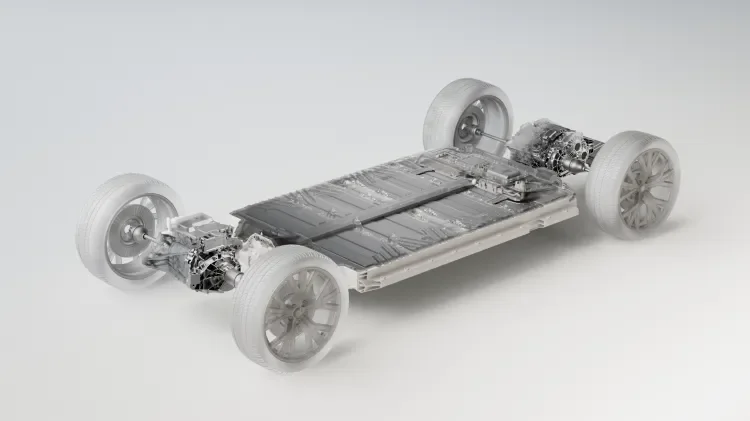Faster charging and longer battery life, delivered through software
Battery performance is changing. Not because of a new chemistry or a breakthrough material, but because software is finally giving electric vehicles and consumer devices the ability to understand what is happening inside their cells.
The Verge recently covered this shift toward software-defined battery performance in its profile of Breathe and Volvo’s work on adaptive charging for the ES90. Read the full story here.
This article explains the engineering behind that capability, why it matters, and how Breathe’s physics-based approach is already proving that fast charging does not have to be fragile.
For a deeper technical dive into that principle, see here.
To learn more about our collaboration with Volvo Cars, visit here.
The limits of traditional charging control
For years, EV charging strategies have been built around lookup tables. These tables define how much current a pack can accept at each combination of temperature and state of charge. They are conservative by design and they cannot reflect the true behaviour of a cell across its full operating range.
The impact is familiar across the industry. Slower charging outside ideal temperature windows. Higher thermal loads just to stay inside those narrow windows. A gap between what a battery could deliver and what a static lookup table allows.
This is not a chemistry problem. It is a control problem.
A physics-based approach to charging
Breathe Charge replaces lookup tables with real-time visibility of electrochemistry. The software uses a lightweight, embedded physics model that operates comfortably inside existing BMS microcontrollers. With less than 10 kilobytes of memory required, it integrates cleanly into today’s automotive platforms.
The model predicts how ions will move within the cell at each moment. With that level of visibility, the charging system can adjust current dynamically across the full performance envelope. The result is a charging curve that tracks the true capability of the battery rather than a coarse approximation.
This improves speed, stability and long-term health at the same time.
Proven gains in real vehicles
In validation with Volvo Cars, Breathe Charge delivered a 30 percent reduction in charging time from 10 to 80 percent on a high-power charger. At zero degrees Celsius the improvement reached 48 percent.
These gains were achieved on existing hardware. No new cell. No change to the pack. A software upgrade made the battery more available to the driver without increasing degradation.
This is why Volvo will launch the ES90 with Breathe Charge inside. It is also why our technology is already active in select consumer devices.
Designed for the hardware OEMs use today
Automotive battery management systems operate on constrained embedded platforms. Any software expected to scale must respect these limits.
Breathe Charge is engineered for this environment. It runs efficiently on existing microcontrollers and can be deployed through standard automotive processes, including over-the-air updates where supported.
This makes physics-based charging practical for current programmes and even more capable for the processors that will arrive in the next generation of EVs.
Do more with the power we have
Battery innovation is no longer limited to cell materials. Control has become a decisive lever. When a system can see the internal physics of its battery, it can deliver faster charging, longer lifetime and more predictable performance across real conditions.
Software is unlocking the capability already present in today’s cells. This is how OEMs deliver better products without additional hardware complexity.
If you want to explore the principles behind adaptive charging in more detail, download our whitepaper:


